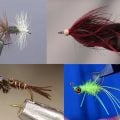A Fly Reel’s Most Important Feature

Photo: Courtesy Orvis
The fishing has been good here lately – good enough that I’ve shirked work duties and spent more time on the water than I should. And while being on the water is a blast, I’ve lost more than a few good fish over the past two months. I’m no fish-catching machine, by any stretch, but I feel like I’ve lost more fish than I normally do.
Most of those lost trout were my own fault – as is often the case – but I can pinpoint two, or perhaps three, where my gear failed me. Specifically, my reel.
I’ve been fishing a nearby tailwater that’s known for its population of above-average brown trout. These fish get fat and happy from a steady diet of crawdads, and the river flows quickly through a narrow canyon. It’s one of the few instances where a reel for trout is absolutely necessary, and my go-to reel for my favorite 6-weight rod has underperformed.
The problem is the reel’s startup inertia, or the amount of force required to get the spool turning. Even with the drag set fairly light, this reel’s startup inertia causes a noticeable hitch whenever a big fish hits hard and immediately starts running. And on this local tailwater, that’s exactly how those big brown trout act. On at least two occasions, larger than average trout took my crawdad nymph and headed straight for the heaviest current in the river. The reel had a noticeable “hitch” before the drag engaged, causing a loss of tension. And as we all know, the second slack line is introduced, your odds for missing a fish increase exponentially.
Just to make sure it wasn’t me using my gear incorrectly, I swapped the line from that go-to reel and put it on an Orvis Mirage. I haven’t had any problems since, even on similarly-sized fish. It’s entirely possible my old go-to reel is worn out, or needs cleaning, but I’ve come to appreciate a reel with little startup inertia more than I ever thought I would. In my mind, that’s a reel’s most important feature. A great drag is nice, but with enough backing and the right technique, you can horse in any fish. Too much startup inertia, though, is a failing you can’t overcome with skill.
Smith Launches New Hookset Frames
The Best Rod for Small Streams











